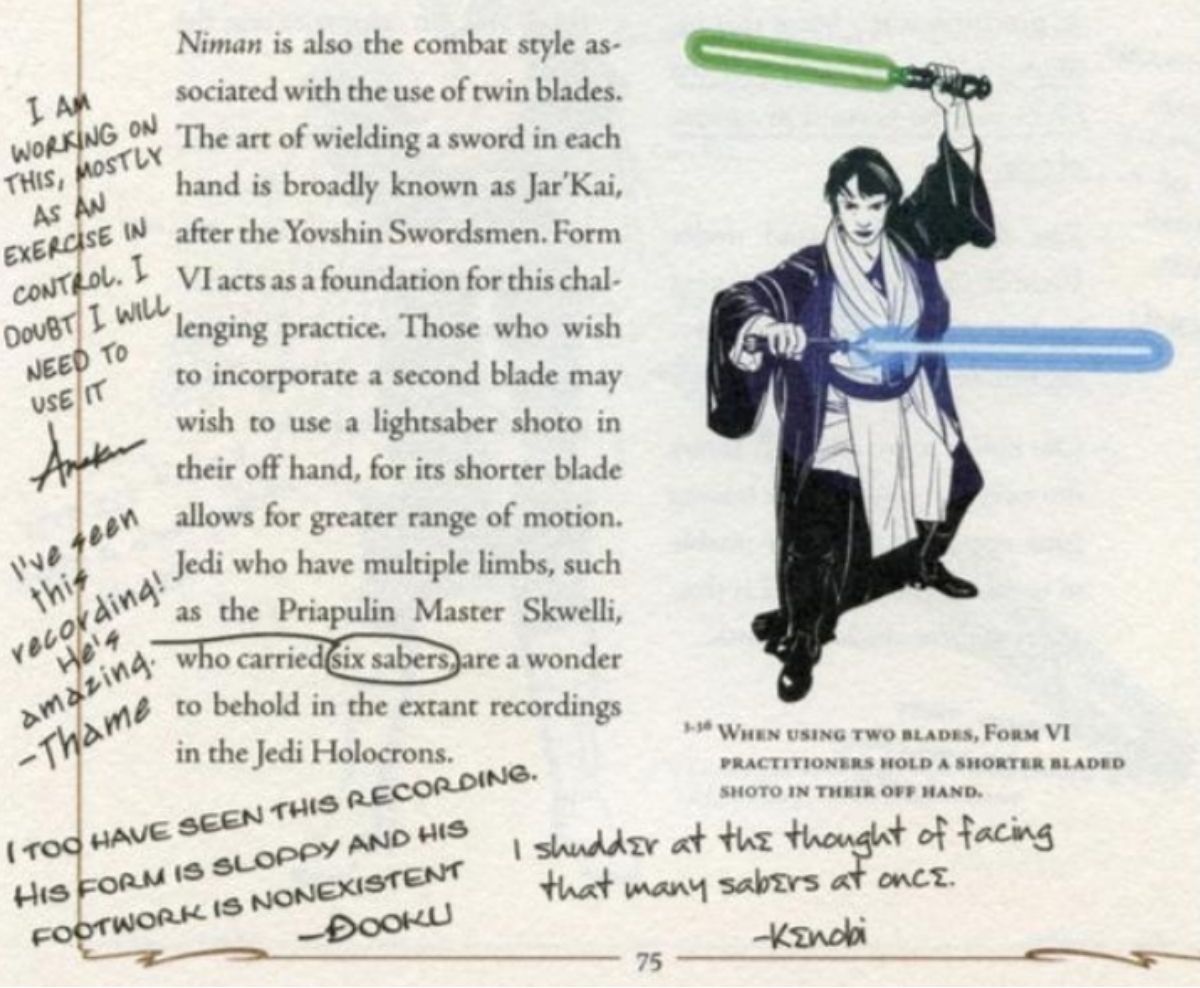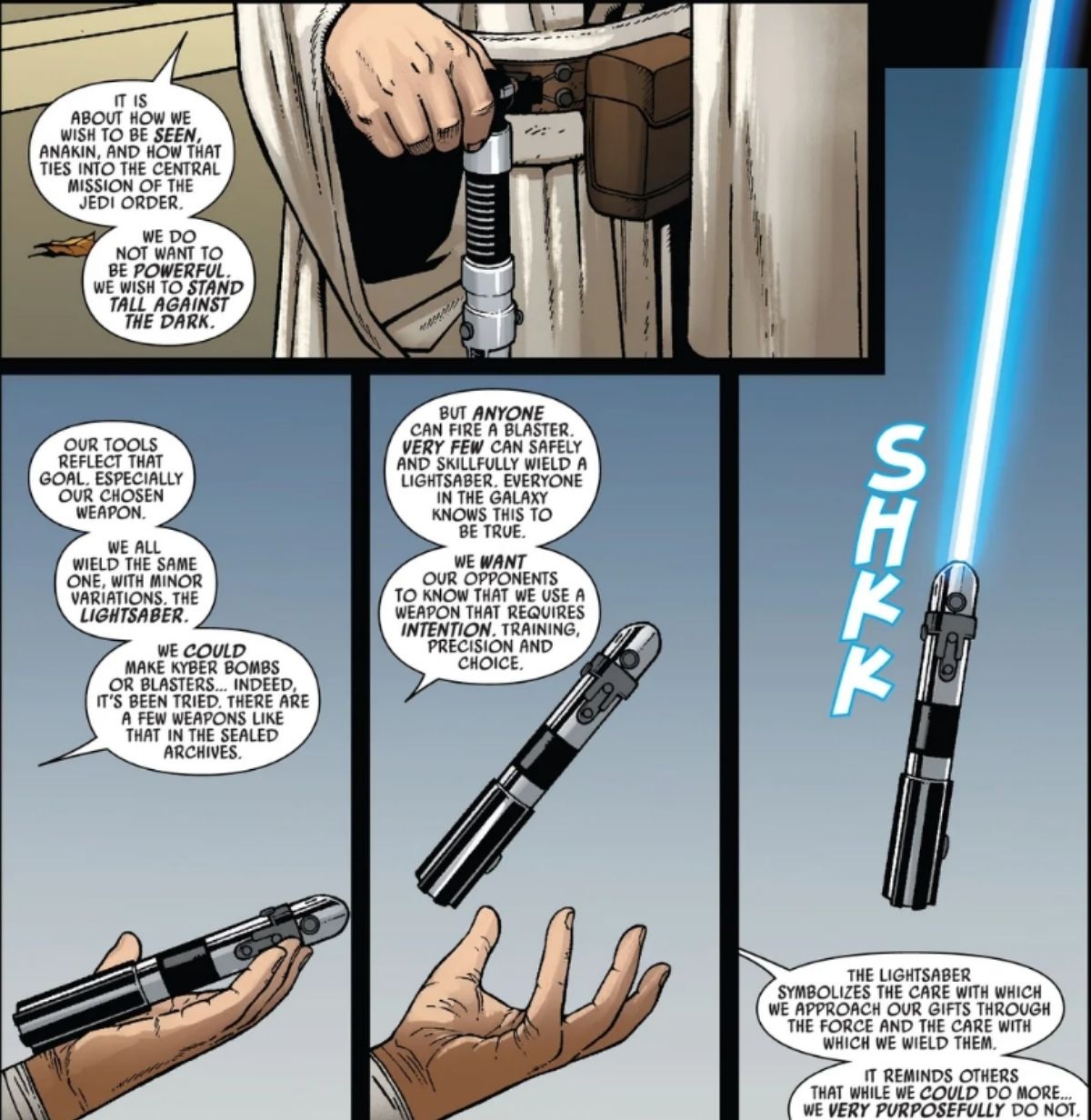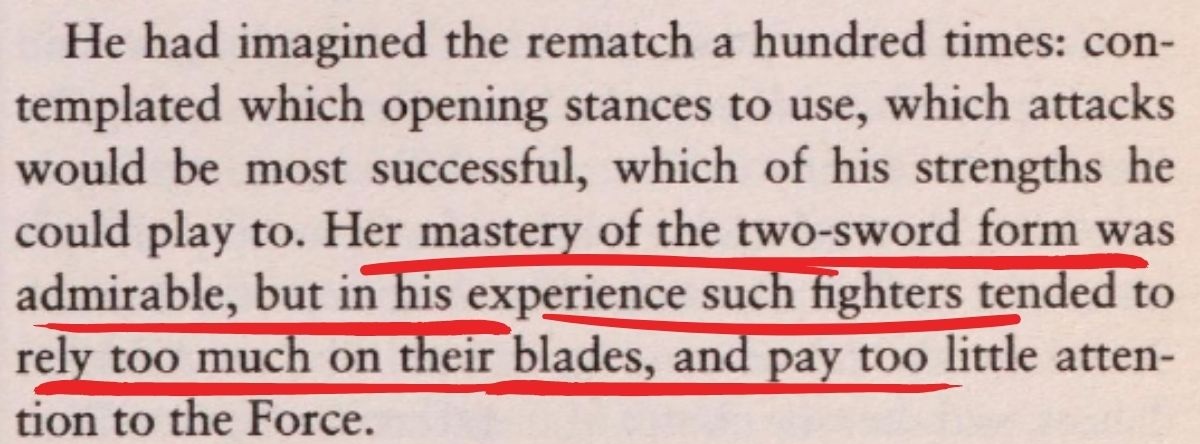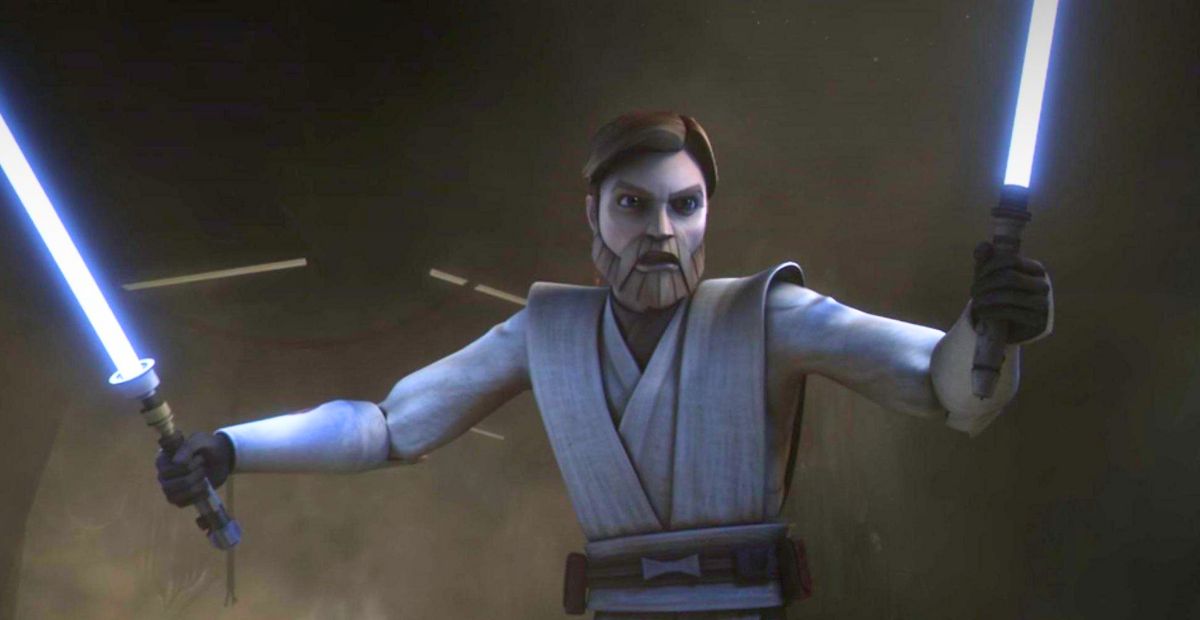I just rewatched The Clone Wars, and something clicked that I never really thought about before. There’s that scene where Anakin fights Barriss Offee in the Jedi Temple—and for a moment, he’s dual-wielding two lightsabers like it’s nothing. And then there’s Obi-Wan, surprising everyone by using two lightsabers at once against Maul and Savage on Florum. That got me thinking…
If Jedi can handle two lightsabers so well, why do they almost always carry just one? I mean, as we always say, “two is better than one,” right?
So what gives? Why don’t Jedi walk around with a second saber clipped to their belt if it can give them an edge in battle?
1. A Jedi’s Weapon Must Be in Harmony With Them
One of the biggest reasons Jedi don’t just carry two lightsabers around isn’t about skill—it’s about connection. A lightsaber isn’t just a tool. It’s a deeply personal extension of the Jedi who builds and wields it. The bond between a Jedi and their kyber crystal is forged through the Force, often during intense meditation, and that bond is unique to each saber.
You can’t just pick up any lightsaber and expect it to feel right—or even function properly in combat. Using a saber that wasn’t meant for you could disrupt your focus, your instincts, even your connection to the Force. That’s why dual wielding, also known as Jar’Kai, isn’t common. It requires harmony—not just between the sabers themselves, but between the Jedi and both blades.
We see this idea play out clearly in the story of Enya Keen, as told in the canon novel The High Republic: Cataclysm.
“I used Master Darhga’s lightsaber throughout the battle, when I didn’t have my own. And I realized that it was somehow encouraging me the whole time. Or rather, the Force did. So when I got my original kyber back from Elder Onning, and Master Roy’s lightsaber, I sat with them both for a long time. I couldn’t help but feel like Master Darhga’s was ready for the arch, but Master Roy’s was not. I talked to Master Yoda about it, and he agreed that in this case, I could carry two lightsabers, if they truly harmonized with the Jedi carrying them.”
This story reinforces the idea that the Force plays an active role in choosing what sabers a Jedi should carry. Even when Enya had two sabers in front of her, only one of them felt right. Only when both were truly in sync with her spirit and path as a Jedi did Yoda allow her to wield them together.
That’s why most Jedi don’t fight with two sabers—even if they can. It’s not about practicality or combat flair. It’s about the Force. And unless both lightsabers are fully aligned with the Jedi’s identity and purpose, using two can do more harm than good. It’s not just about “more weapons = more power.” It’s about balance, and most Jedi only find that with a single, chosen blade.
2. Holding Two Lightsabers Is Not the Jedi Way
The second thing we have to mention is that, despite some Jedi being incredibly skilled with two single-bladed lightsabers, it’s still not the Jedi way. Jedi don’t see lightsabers as simple weapons for battle. To them, a lightsaber is a symbol—something used to defend, not dominate, and to bring peace, not destruction.
When a Jedi does choose to wield two blades, it’s usually in the Jar’Kai style. That typically means one standard lightsaber and one shoto, a shorter lightsaber for better maneuverability. We see this clearly in Ahsoka Tano’s transition from using a single blade to dual-wielding with a shoto in her off-hand.
According to The Jedi Path, the form most associated with dual-wielding is Niman (Form VI). It’s a balanced and adaptable style, making it ideal for Jedi who want to experiment with Jar’Kai. Still, the practice was never common among Jedi.
“Niman is also the combat style associated with the use of twin blades. The art of wielding a sword in each hand is broadly known as Jar’Kai after the Yovshin Swordsmen. Form VI acts as a foundation for this challenging practice. Those who wish to incorporate a second blade may wish to use a lightsaber shoto in their off hand, for its shorter blade allows for a greater range of motion.”

Why? Because more isn’t always better.
Two blades introduce more complexity, more motion, and more room for emotional overreach. The Jedi path emphasizes control and discipline—not domination. Dual sabers may offer extra offense, but they also demand more attention, more aggression, and more risk of imbalance.
This philosophy is echoed perfectly in Star Wars #25, when a young Anakin Skywalker asks Obi-Wan why the Jedi rely on lightsabers at all—why not use blasters, bombs, or more advanced tech? Obi-Wan explains that the lightsaber isn’t just a weapon, it’s a message. It tells the galaxy the Jedi aren’t destroyers. They choose a weapon that requires restraint, mastery, and intention.
Anakin asks, “Why do we do this, Master Kenobi? … Lightsabers.” And Obi-Wan responds:
“It is about how we wish to be seen, Anakin. And how that ties into the central mission of the Jedi Order. We do not want to be powerful. We wish to stand tall against the dark. Anyone can fire a blaster. Very few can safely and skillfully wield a lightsaber… We want our opponents to know that we use a weapon that requires intention, training, precision, and choice. The lightsaber tells the galaxy that the Jedi are not destroyers. We are protectors.”

And that same logic applies to why most Jedi only carry one. If the goal is clarity and peace, not overwhelming force, then one blade, used with purpose, is all they need.
3. Wielding Two Lightsabers Also Comes With Weaknesses
Using two lightsabers might sound like a major upgrade, but for most Jedi, it actually comes with a serious drawback—it limits their connection to the Force during combat. When both hands are occupied managing separate blades, it becomes much harder to fluidly use Force abilities in the middle of a duel. A Jedi fighting with one lightsaber can still push, pull, or free up a hand when needed to unleash powerful Force techniques. But with two sabers, nearly every movement is locked into offense or defense, leaving little space for spontaneous Force use.
This isn’t just theory—it’s a weakness experienced Jedi have recognized firsthand.
In the Legends novel Yoda: Dark Rendezvous, Jedi Master Jai Maruk reflects on this very issue after battling Asajj Ventress, a skilled practitioner of the Jar’Kai dual-saber style. While he respects her technique, he sees its flaw clearly:
“Her mastery of the two-sword form was admirable, but in his experience such fighters tended to rely too much on their blades, and pay too little attention to the Force.”

That insight cuts to the heart of why most Jedi don’t adopt dual-wielding as their main style. Even the flashiest technique can fall apart without a strong connection to the Force.
We’ve seen examples of this throughout Star Wars stories. In Attack of the Clones, when Anakin picks up a second saber during his duel with Count Dooku, it doesn’t give him an edge, it makes him overcommit, and Dooku easily severs his arm.
Another key example comes from Obi-Wan’s duel with Maul and Savage in The Clone Wars. Obi-Wan briefly dual-wields and holds his ground—but it’s short-lived. Maul quickly breaks the flow of the duel by Force-pushing Obi-Wan hard against a wall. Now compare that to Obi-Wan’s duel with Anakin on Mustafar, where both fighters could freely use the Force mid-fight. The ability to blend Force techniques into combat gave Obi-Wan an edge—something dual-wielders sacrifice.
All of this explains why we don’t often see Jedi fighting with two lightsabers.

